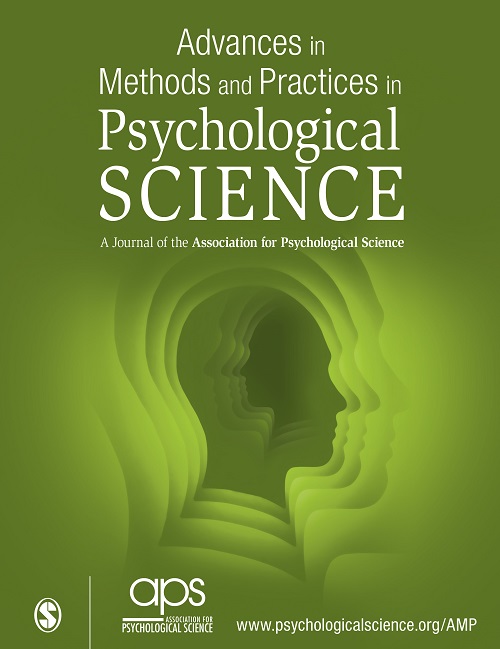不可能的假设和效应大小限制
IF 13.4
1区 心理学
Q1 PSYCHOLOGY
Advances in Methods and Practices in Psychological Science
Pub Date : 2023-10-01
DOI:10.1177/25152459231197605
引用次数: 0
摘要
在提出假设、进行强度分析和考虑研究结果的相关性时,心理科学正朝着进一步明确效应大小的方向发展。这一发展引发了人们对发现这些效应大小的更广泛背景的重视,因为赋予特定大小的重要性可能因情况而异。在这一发展的基础上,我们又提出了一个至关重要的、但在心理学中却一直未被重视的偶然性:在心理学所处的常见多元背景下,群体效应大小的幅度存在数学限制,而且这些限制可能比通常假设的要严格得多。这意味着某些假设或预先登记的效应大小可能是不可能的。同时,这些限制提供了一种从统计学角度三角测量未知效应大小合理范围的方法。我们解释了这些限制存在的原因,说明了如何识别这些限制,并提供了建议和工具,以便通过利用出现这些限制的更广泛的多元背景来改进假设的效应大小。本文章由计算机程序翻译,如有差异,请以英文原文为准。
Impossible Hypotheses and Effect-Size Limits
Psychological science is moving toward further specification of effect sizes when formulating hypotheses, performing power analyses, and considering the relevance of findings. This development has sparked an appreciation for the wider context in which such effect sizes are found because the importance assigned to specific sizes may vary from situation to situation. We add to this development a crucial but in psychology hitherto underappreciated contingency: There are mathematical limits to the magnitudes that population effect sizes can take within the common multivariate context in which psychology is situated, and these limits can be far more restrictive than typically assumed. The implication is that some hypothesized or preregistered effect sizes may be impossible. At the same time, these restrictions offer a way of statistically triangulating the plausible range of unknown effect sizes. We explain the reason for the existence of these limits, illustrate how to identify them, and offer recommendations and tools for improving hypothesized effect sizes by exploiting the broader multivariate context in which they occur.
求助全文
通过发布文献求助,成功后即可免费获取论文全文。
去求助
来源期刊
CiteScore
21.20
自引率
0.70%
发文量
16
期刊介绍:
In 2021, Advances in Methods and Practices in Psychological Science will undergo a transition to become an open access journal. This journal focuses on publishing innovative developments in research methods, practices, and conduct within the field of psychological science. It embraces a wide range of areas and topics and encourages the integration of methodological and analytical questions.
The aim of AMPPS is to bring the latest methodological advances to researchers from various disciplines, even those who are not methodological experts. Therefore, the journal seeks submissions that are accessible to readers with different research interests and that represent the diverse research trends within the field of psychological science.
The types of content that AMPPS welcomes include articles that communicate advancements in methods, practices, and metascience, as well as empirical scientific best practices. Additionally, tutorials, commentaries, and simulation studies on new techniques and research tools are encouraged. The journal also aims to publish papers that bring advances from specialized subfields to a broader audience. Lastly, AMPPS accepts Registered Replication Reports, which focus on replicating important findings from previously published studies.
Overall, the transition of Advances in Methods and Practices in Psychological Science to an open access journal aims to increase accessibility and promote the dissemination of new developments in research methods and practices within the field of psychological science.

 求助内容:
求助内容: 应助结果提醒方式:
应助结果提醒方式:


